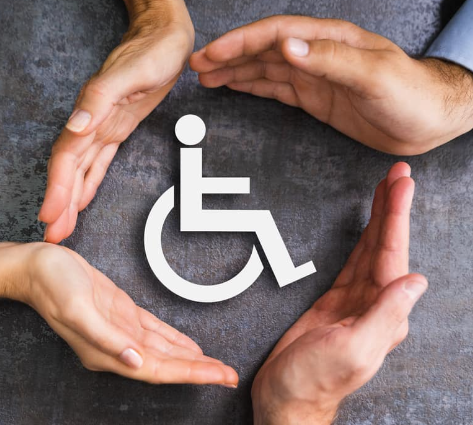In a world that often revolves around the concept of “ability,” individuals with disabilities face unique challenges. These challenges can vary greatly depending on the nature of the disability, but what remains constant is the importance of finding innovative ways to empower individuals and create a more inclusive society. This is where assistive technologies play a vital role. By leveraging the power of technology, assistive devices and tools have opened up new possibilities, enabling people with disabilities to overcome obstacles and lead fulfilling lives. In this blog post, we will explore some of the challenges faced by individuals with disabilities and the transformative impact of assistive technologies.
What is disability?
Disability is a broad term that encompasses a range of conditions, impairments, or limitations that may affect a person’s physical, sensory, cognitive, or mental abilities. It is important to note that disability is not solely determined by an individual’s condition but also by the interaction between their impairment and the barriers present in the environment. These barriers can be physical, social, or attitudinal and may prevent individuals with disabilities from participating fully in various aspects of life, including education, employment, transportation, and social interactions.
Disabilities can be categorized into different types, including:
Physical Disabilities
These disabilities involve impairments that affect mobility, dexterity, coordination, or physical functioning. Examples include paralysis, limb loss, muscular dystrophy, and cerebral palsy.
Sensory Disabilities
Sensory disabilities impact one or more of the senses, including vision, hearing, or both. Visual impairments, blindness, deafness, and hearing impairments fall under this category.
Cognitive Disabilities
Cognitive disabilities involve impairments in intellectual functioning, memory, learning, and problem-solving abilities. Conditions such as intellectual disabilities, autism spectrum disorders, and traumatic brain injuries are examples of cognitive disabilities.
Psychiatric Disabilities
Psychiatric disabilities encompass mental health conditions that affect a person’s emotional well-being, thinking, and behavior. Examples include depression, anxiety disorders, bipolar disorder, and schizophrenia.
Neurological Disabilities
Neurological disabilities result from disorders affecting the brain and nervous system. Conditions like multiple sclerosis, epilepsy, Parkinson’s disease, and cerebral palsy fall under this category.
Society plays a crucial role in either enabling or hindering the inclusion and full participation of individuals with disabilities. By promoting accessibility, removing barriers, and fostering a culture of inclusivity, we can ensure that individuals with disabilities are valued members of our communities and have equal opportunities to thrive.
What is disability challenges?
Disability challenges refer to the specific difficulties and obstacles that individuals with disabilities may face in their daily lives due to their impairments and the barriers present in their environment. These challenges can vary depending on the nature and severity of the disability, as well as the level of accessibility and inclusion in the surrounding society.
Here are some common disability challenges that individuals may encounter:
Physical Barriers: Physical barriers include inaccessible buildings, lack of ramps or elevators, narrow doorways, and inadequate transportation options. These obstacles can limit the mobility and independence of individuals with physical disabilities, making it difficult for them to navigate public spaces, access services, or participate in social activities.
Social Stigma and Discrimination: Many individuals with disabilities face social stigma, prejudice, and discrimination, which can lead to exclusion, isolation, and limited opportunities. Negative attitudes and misconceptions about disabilities can create barriers to employment, education, and social interactions, impacting the self-esteem and overall well-being of individuals.
Limited Accessibility: Inaccessible websites, documents, and technology can create barriers for individuals with visual, hearing, or cognitive impairments, limiting their access to information, communication, and online services. Inadequate provision of sign language interpreters, captioning, and assistive devices in public settings further hampers inclusion and participation.
Educational Challenges: Students with disabilities often encounter challenges in accessing quality education and receiving appropriate support. Inaccessible classrooms, curriculum, and teaching methods may hinder their learning experience. Additionally, attitudinal barriers and a lack of inclusive educational policies can contribute to the exclusion of students with disabilities from mainstream educational settings.
Employment Barriers: Individuals with disabilities often face difficulties in finding and maintaining employment due to discriminatory practices, inaccessible workplaces, and a lack of reasonable accommodations. Negative assumptions about their abilities and limited access to vocational training or skill development programs can further impede their employment prospects.
Healthcare Disparities: Individuals with disabilities may face disparities in accessing healthcare services. Lack of accessible healthcare facilities, limited availability of specialized equipment or treatments, and inadequate training of healthcare professionals in disability-specific care can pose significant challenges to individuals seeking medical assistance.
Mental Health and Emotional Well-being: Disability challenges can also impact mental health and emotional well-being. The experience of living with a disability, social isolation, and the stress of navigating inaccessible environments can contribute to higher rates of mental health conditions such as depression, anxiety, and adjustment disorders.
It is important to address these challenges by promoting accessibility, fostering inclusive attitudes, advocating for policy changes, and developing assistive technologies and support systems. By actively working towards creating an inclusive and barrier-free society, we can ensure that individuals with disabilities can fully participate, contribute, and lead fulfilling lives. Together, we can create a world that celebrates diversity and provides equal opportunities for all.
What is next?
In our next installment, we’ll explore what is Theoretical models of disability and delve into each of theoretical disability types.
For more information on why accessibility is important in general, you can check out my previous blog post here.
For further information on how In our next installment, we’ll explore the importance of captions for individuals with hearing disabilities and delve into how we can promote digital products using captions with semantic markup to enhance accessibility for those with hearing impairments.to make your product accessible to your audience, contact our experienced design experts, check out our Accessibility IQ for your website, download our guide Digitally Accessible Experiences: Why It Matters and How to Create Them, read more from our UX for Accessible Design series.





Leave A Comment